What does parsley look like and how to grow it?
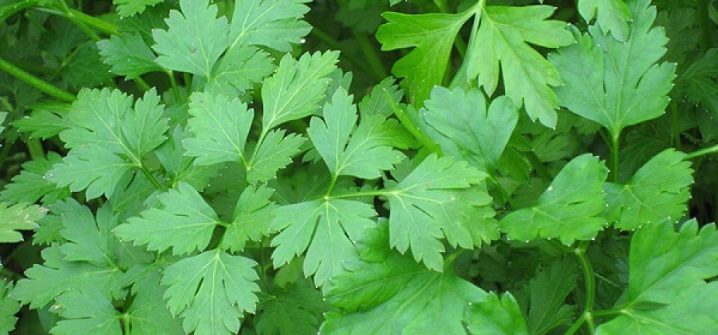
Parsley is considered one of the most popular garden plants. The widespread distribution of this culture ensures its availability on most continents. But few people know which family the annual plant belongs to, whether it blooms, what the green looks like in unusual varieties. All of these issues are worth understanding.
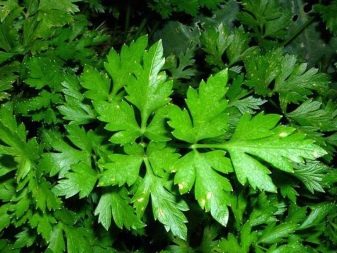
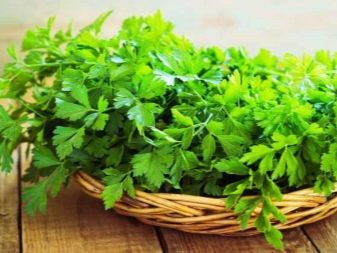
general description
Parsley belongs to the family of umbrella plants, most of which have a two-year, less often one-year life cycle. This genus is not too large, there are only 2 generally accepted species, 6 more have an undefined status. A botanical description helps to understand what a garden culture looks like:
- herbaceous plant;
- pivotal root system, well developed;
- stem straight, thin, strong;
- leaves are pinnate, with a dissection into 2-3 segments;
- the flowers are cupped, whitish or yellow-green, may have a carmine tint;
- the fruit is slightly flattened, ovoid.

Parsley blooms, like other umbrella plants, forming a solid arrow with a hollow stem. In the first year of the life cycle, the plant forms greenery (leafy rosette with ordinary or curly leaves), gives a root crop. The peduncle is formed only in a two-year cycle. The stem height can reach 60-90 cm. The root crop grows up to 50-70 mm in diameter and up to 300 mm in length.
The appearance of a plant is formed based on its belonging to a particular variety. Visually, they are fairly easy to distinguish. In leafy varieties, the root crop is not formed. Reproduction of the culture is carried out mainly by the seed method. In a two-year cycle, the roots are left in the ground until next year or planted again in the spring.
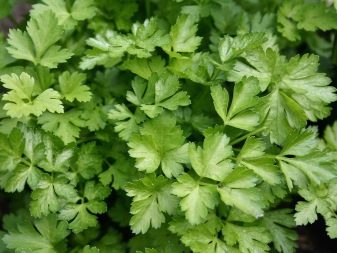

Types and varieties
Selecting parsley varieties suitable for planting for the Moscow region and other climatic zones, it is important to pay attention not only to their individual characteristics. The plant species is also taken into account by vegetable growers. For the vegetable garden and container gardening, it is better to purchase early parsley, which has time to give abundant greens in the spring.
Most of the root variety matures much later when sowing seeds harvested from the inflorescence. It will be possible to get a crop on your own only for 2 years.
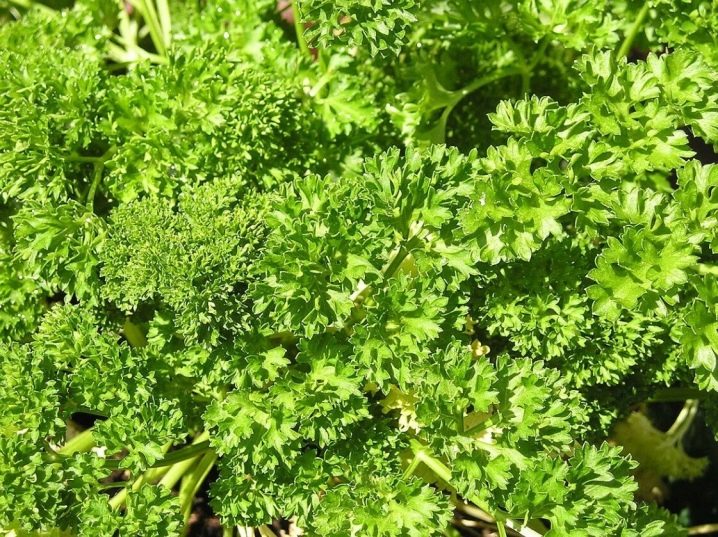
Common leaf
The most common variety (Petroselinum vulgare) with leaves without corrugation in a dark and rich green hue. They always remain matt on the back of the plate. The features of common parsley include:
- a wide selection of subspecies with different ripening periods;
- dull taste and aroma without too spicy notes;
- yield up to 5 kg per 1 m2;
- readiness for the first harvest at the stage of appearance of 3-4 bunches of leaves;
- ripening within 60-90 days from the date of sowing;
- resistance to major diseases;
- cold resistance up to -8 degrees.

Common leafy parsley is highly valued for its culinary merit, aesthetics, and is often used for cooking and decorating dishes. Its root system does not have a central core, it branches strongly, providing the plant with the necessary supply of nutrients. The leaves of the plant are used in folk medicine, in the preparation of anti-inflammatory infusions and decoctions.
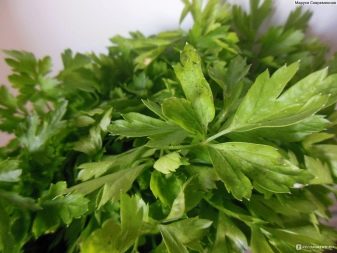
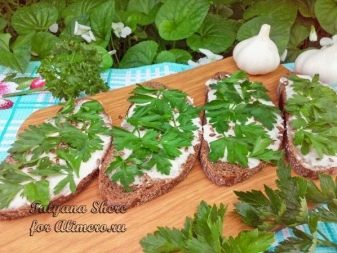
Popular varieties of this variety of parsley include cultivated plants with the following names.
- "Sandwich". An incredibly popular variety with medium ripening times and high yields. Plants are cold-resistant, greens are well stored in cut, remains elastic. The leaves are not too large, smooth, poorly dissected. The taste is pleasant, not very spicy.
- "Ordinary"... Mid-season variety with highly dissected smooth leaves of a bright emerald hue. The plant gives a strong aroma, abundantly increases the volume of tops. The yield of the variety is average, up to 1.7 kg / m2, greens ripen in bunches in about 2.5 months.
- "Green Crystal". A late ripening but popular cultivar with deep green, heavily dissected leaves. Greens contain many aromatic substances and essential oils, after cutting, the volume of the tops is quickly restored. Good for freezing.
- "Breeze". A transitional variety showing signs of curliness on the leaves. Ripening is average in terms of time, the plant forms tall stems. When cut, it quickly gains green mass, does not lodge, and is valued for its taste and aromatic properties. The yield is slightly above average.
- "Italian giant"... A variety with incredibly large leaves, slightly rougher than other parsley subspecies. The yield is not very high, the stems are strong, the bush grows up to 67 cm along the stems. The variety is unpretentious, shade-tolerant, cut tops quickly restore their former density.
- "Carnival". Parsley variety with strongly dissected bright leaves, noticeable aroma, high growth rate. Greens are ready to harvest in 2 months from the date of sowing. Cut branches keep freshness and elasticity for a long time. The yield is close to maximum.
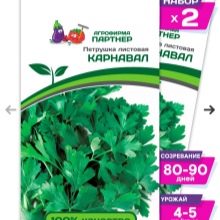
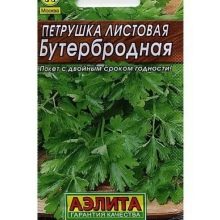
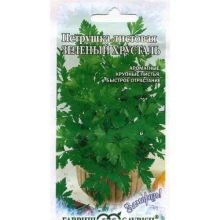
This variety of parsley can significantly diversify the daily diet, saturate it with vitamins and other biologically active substances. It is not surprising that it is considered one of the most common among garden crops.
Leafy neapolitan
This subspecies is also called garden or Italian. Neapolitan parsley produces split leaves with corrugated edges, it is a subspecies of curly (curly). It can be distinguished from an ordinary one by its botanical name - Petroselinum crispum var. Neapolitanum. The leaves of this species are yellow-green in color, with pronounced corrugation on the surface of the plate and along the edges.
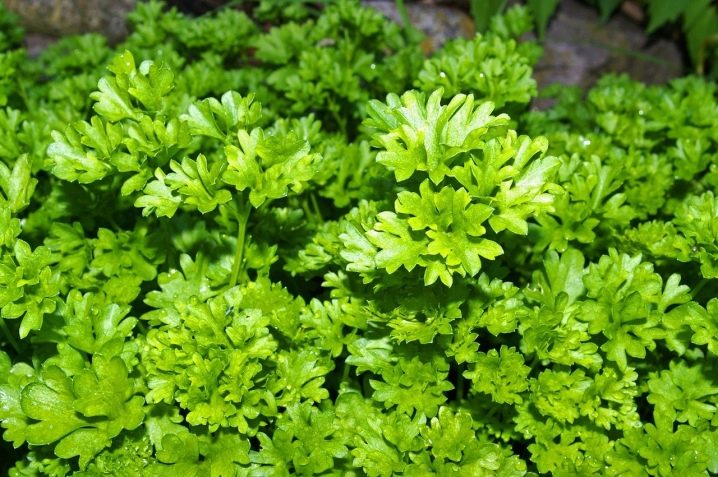
The aroma and taste of Neapolitan parsley is stronger and more spicy. The stems are also eaten. Among its most popular varieties are plants with such names.
- "Curly". A very decorative variety with a lush bouquet of corrugated light green leaves. It has a pleasant taste and aroma and can be stored well after cutting. It grows throughout the summer, including in a pot culture.
- "Aster"... Variety of Czech selection, high-yielding, with large leaves, very curly. The root is present, but does not have a food purpose, it turns out to be too tough and fibrous. Leaves of delicate taste are ready for cutting after 2 months from the moment of sowing. Plants are suitable for open field cultivation in containers.
- "Fragrant"... This variety of curly parsley has a high and dense leaf rosette, strong and sturdy petioles. A strong spicy aroma accompanies both stems and leaves. The variety is considered promising for commercial cultivation in greenhouse farms, greens are used in the preparation of marinades, brine.
- Esmeralda... An early ripe variety with pronounced curliness of leaves, which manifests itself well in container cultivation. The variety forms compact bushes up to 20 cm in height, cutting begins when a rosette with stems of 120 mm or more is obtained. The yield is low, but the taste of the greens is very delicate, pleasant, spicy.
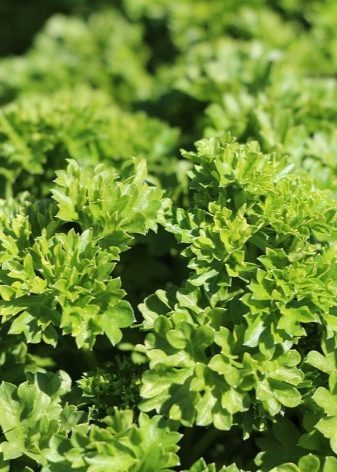

Neapolitan parsley varieties are often seen as decorative. But they are great for canning, but when fresh, they are usually frozen and dried for the winter.
Root
In this variety of parsley, the main culinary advantage is the root vegetable, which improves the taste of broths and other dishes. Plants are more compact, with less lush greenery. Cutting of the tops is not done, since the condition of the root crops and their sizes depend on its condition. The content of vitamins and nutrients in greens is reduced in comparison with leafy varieties.

Here is a list of the most popular edible root vegetable varieties.
- "Bogatyr". A universal variety, forms both a large leaf rosette and a compact root crop, provides an average yield within 3 kg / m2. The bushes grow up to 40 cm, they are covered with dark green leaves of a triangular shape. The plant is shade-tolerant, it feels good even in extreme heat. Ripening of root crops occurs in 5 months, the leaf rosette is ready for cutting in 60 days from the moment of sowing.
- "Sugar". The variety is very sensitive to growing conditions: under unstable weather conditions or violation of agricultural technology, the root crop acquires rigidity, loses its pleasant taste, and begins to taste bitter. The leaf rosette is compact, with delicate greenery. It is appreciated for its versatility. Yield indicators for this common variety are average.
- "Tusk". A variety of foreign selection. Yields large root vegetables weighing up to 150 g with a creamy white pulp. Undemanding to agricultural technology and watering.
- "Bordovikskaya". The variety has an average ripening period with a growing season of about 120 days. A root vegetable with a fragrant white pulp turns out to be cone-shaped, almost white, weighing up to 200 g. The crop can be stored after harvesting in a vegetable box or cellar.
- "Berlin"... Quite a popular early ripening variety that gives mature roots in just 90 days. The shape of the underground part is conical, the pulp is yellow, juicy, with a bright aroma. Fruit weight does not exceed 115 g. The variety is not suitable for long-term storage.
- Eagle. Root parsley bred by foreign breeders. It reaches technical ripeness in 120-130 days. Root crops are aromatic, white, conical, with dense pulp. Suitable for long-term storage.
- "Spicy". Root parsley with long and thin fruits. The variety is early ripening, very good in broths and hot dishes. Forms a spreading leaf rosette.
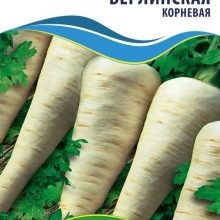
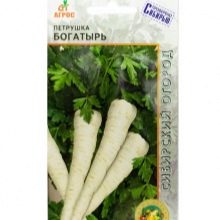
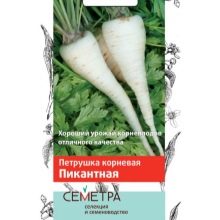
It is important to know that root parsley has its own growing characteristics. The seeds take too long to germinate due to the high content of essential oils. Pre-soaking and drying helps to speed up the process. The seeding is also different. Plants are placed in a nesting way, according to a 30x30 cm scheme.After the emergence of seedlings, the beds are thinned out, leaving 1 sprout for each sector, then in the middle of summer, the central row is also weeded out.
By the end of summer, in order to stimulate the development of root crops, part of the crop is harvested. The rosette, with proper development, will quickly pick up spreading, and the root crop will have a chance to bring the mass to 400 g or more.
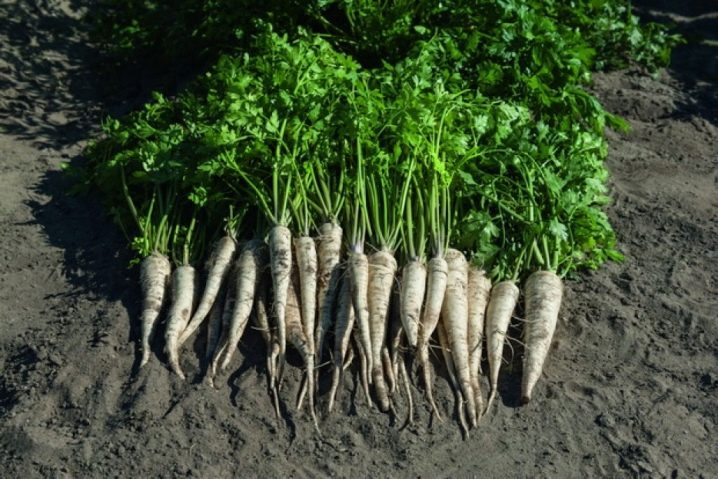
How to grow seedlings?
The seeds of a biennial plant are fairly easy to get yourself if you already have parsley in the garden. To obtain a specific variety, it is better to purchase planting material from trusted suppliers. Seedling growing is more often used for leafy species. For root transplantation, it is highly undesirable.
Sowing is done at the end of March. You can get seedlings in the same containers with tomatoes. Clean soil for vegetables or garden soil steamed in the oven is placed in separate trays. Add 3 tablespoons of superphosphate per 1 m2 of land.
Forcing seedlings may be delayed. Even with preliminary soaking in growth stimulants, 18-25 days pass before the first sprouts hatch. Throughout this period, the topsoil is carefully loosened, moistened with a spray bottle. Regular watering will provide a higher germination rate, and if there is a lack of water, the process will be uneven.
Intensive growth of seedlings begins with the appearance of the first true leaves. During this period, it is important to maintain a temperature range of + 18-22 ° C in the place where the seedling pot is installed. By 30-40 days, the bushes are ready to be transferred to open ground or a greenhouse. At the stage of formation of the rosette, the plants are left in the light, light shading is permissible, but not most of the day.
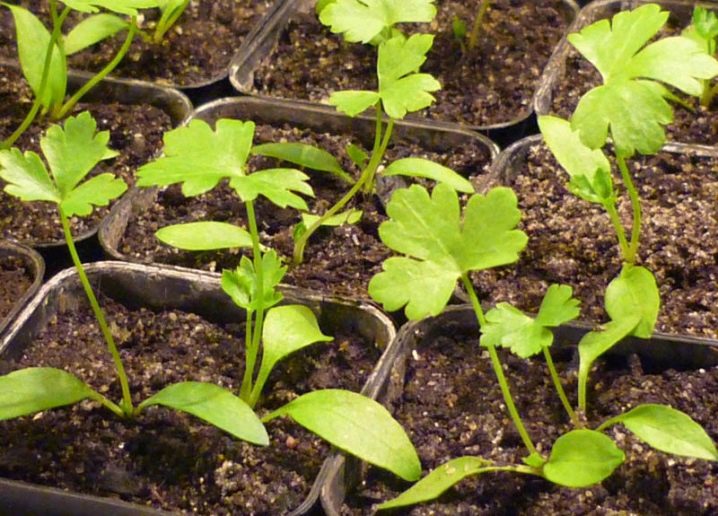
Features of growing in different conditions
Parsley is an unpretentious crop that, depending on the region, can be planted in open ground, greenhouses or in containers on the windowsill. In all cases, it is permissible to use a conveyor growing scheme, in which sowing is carried out at intervals of 2-3 weeks throughout the warm season. This ensures the possibility of getting fresh herbs to the table in a continuous mode.
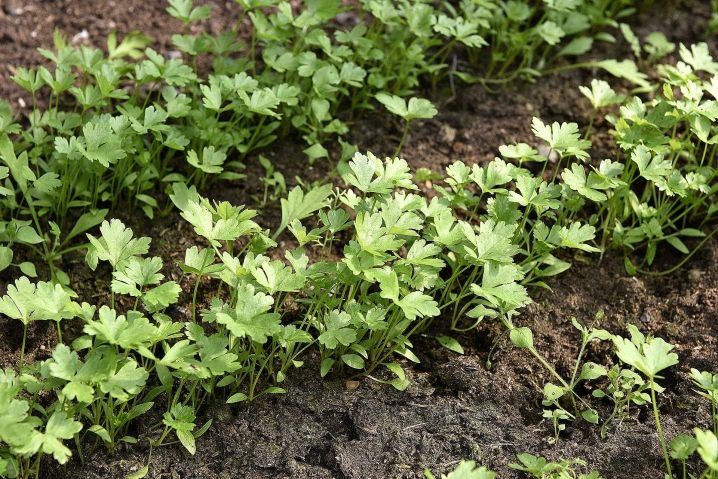
In the open field
It is recommended to prepare the soil for parsley in advance, from autumn, saturating it with mineral fertilizers and organic matter. Then the prepared bed is dug up. In the spring, the procedure is repeated using nitrate and organophosphorus compounds. The soil itself should be loose and fertile, especially for planting the root variety.
Seeds are sown directly into the ground, after disinfecting them, if the material was collected independently. They can be pre-soaked or germinated. Landing is done with grooves to a depth of 10-20 mm. Then the grains are covered with a layer of soil.
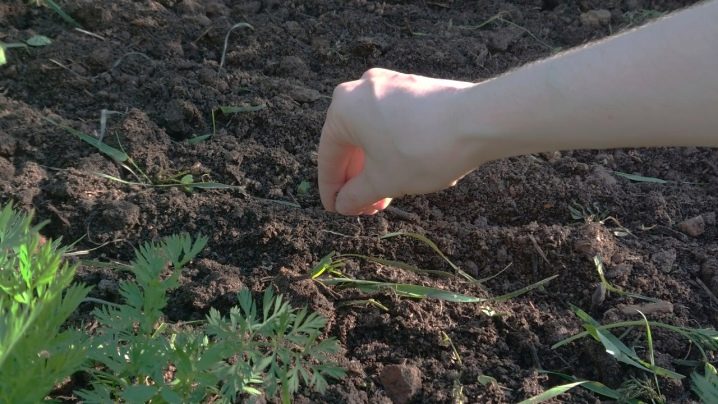
The main care of plants in the open field is reduced to the following points.
- Moistening and loosening the soil before the first shoots. It is important that a hard, airtight crust does not appear on the surface.
- Thinning... It is carried out at the stage of appearance of 2 permanent leaves. The procedure is repeated later. Parsley should have 5-6 leaves.
- Weeding... It serves as a defense against disease. Weeding also helps parsley grow and develop better.
- Watering... It will be needed during periods with insufficient natural rainfall.
- Top dressing... The leafy variety is fertilized several times per season with ammonium nitrate at a dosage of 5-6 g / m2. The root is fed with organic matter.
Harvesting, depending on the ripening time of a particular variety, begins in 50-90 days and lasts throughout the warm season. Finally, parsley is removed from the beds in late autumn.

In the greenhouse
Film and other shelters allow sowing parsley directly into the ground at the same time as forcing it for seedlings. This method of growing makes it possible to ensure a constant supply of fresh greens, even in a short summer, insufficient light. Parsley is transferred to a greenhouse before frost begins, forming parallel furrows and spilling them with water.
Parsley is planted in a greenhouse at a distance of 80-100 mm in a row and up to 200 mm between adjacent strips. Then care is organized.
- Water weekly or less frequently... A stream of water is directed into the furrows.
- Combat signs of rot by dusting the affected areas with fluff lime.
- Cut the leaves 3-4 times per life cycle. Untimely harvesting of greenery leads to its wilting, lodging.
- Maintain temperature about + 15-18 degrees Celsius.
- Normalize humidity using natural or forced ventilation.
Parsley is grown in greenhouses from October to April-May. The average yield can reach 6-8 kg per 1 m2 for the entire period.

On the windowsill
Potted and container growing of parsley is carried out on a windowsill or a glassed-in balcony. Each container has no more than 2 root crops. It is better to take clay pots, not glazed, and for the leaf variety, rectangular boxes with a depth of about 20 cm are suitable. Sowing is carried out in the 3rd decade of April.
The best soil for parsley in a pot culture is a mixture of peat and turf in equal proportions. The substrate is saturated with a universal fertilizer in a briquette. Then it is watered, grooves are formed, and planting is carried out.
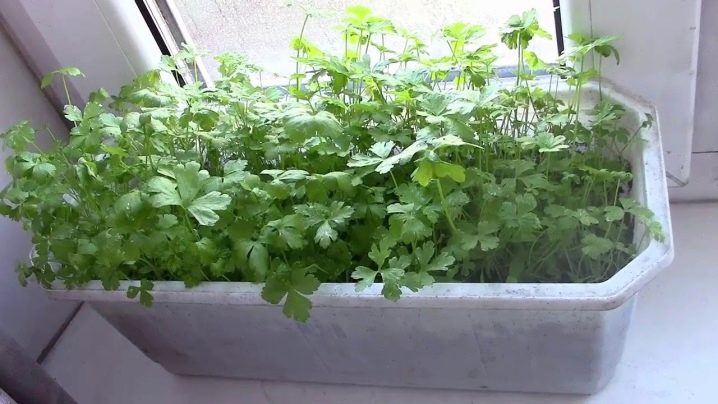










The comment was sent successfully.